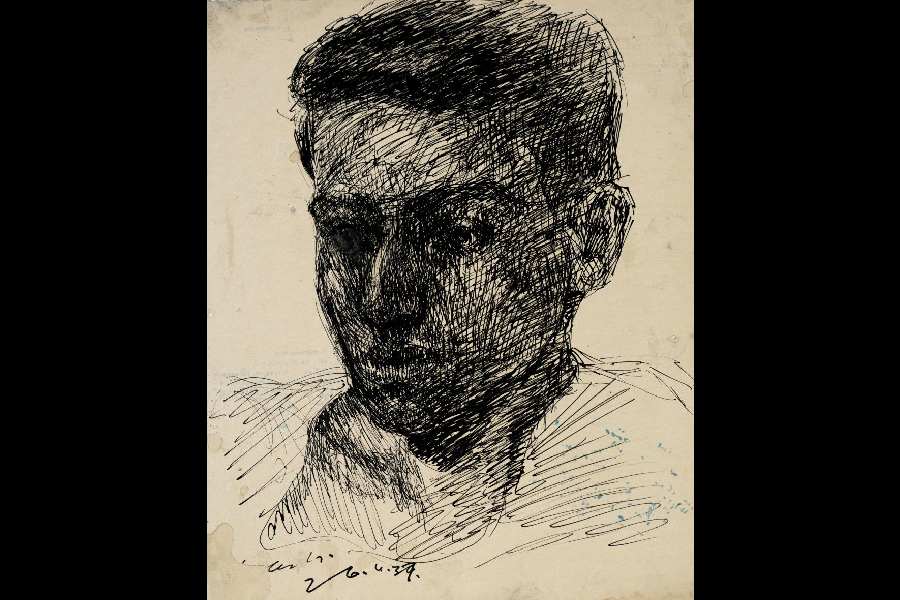The name of the exhibition, Gobardhan Ash: Retrospective, 1929-1969, by the Mumbai-based gallery, Prinseps, at the Kolkata Centre for Creativity was a misnomer. The exhibition curated by Brijeshwari Kumari Gohli and Harsharan Bakshi had a wide variety of works by Gobardhan Ash (1907-1996). The display was good. But there was not a single drawing or painting of the zombie-like victims of the 1943 Bengal famine that took a toll of three million lives. There was a mention of these works in the timeline, but nothing besides. Ash’s career as an artist, like those of his contemporaries such as Somnath Hore, Zainul Abedin and Chittaprosad, was defined by this cataclysm which still makes news. To ignore Ash’s death-haunted works depicting the skeletal bodies of famine victims would be like writing Sukumar Ray’s biography without a word about Abol Tabol.
Thanks to his training in the academic style at the government art school in Calcutta at 19 years of age, Ash was a powerful draughtsman but he used his skill to depict the humdrum and mundane realities of life and he excelled at it — quite inevitable for an artist who broke out of the mould imposed by outdated Western conventions.
Ash was born in Begumpur in the Hooghly district into an impoverished family and, following his stint in Calcutta in 1926-30, joined the government school of arts and crafts in Madras in 1932 under Debiprasad Roy Choudhury. In 1933, he became a founder member of the Art Rebel Centre. He flitted from one job to the other and, in 1937, won awards for his exhibition at the Academy of Fine Arts when it existed in a room located in the Indian Museum.
Ash was employed as an artist at the central ordnance department in Agra in 1944 and at the Indian Institute of Art in Industry in 1946. The Calcutta Group, along with the Progressive Artists’ Group of Bombay, held a joint exhibition at 1 Chowringhee Terrace in 1950. Here, Ash commanded a higher price than M.F. Husain. In 1950-51, he held his first one-person show organised by the Calcutta Group. But Ash was never a money-grubber and he preferred life in isolation in his village where he helped children with their studies and art practice.

An artwork by Gobardhan Ash Prinseps
At the exhibition, there were sensitive drawings of human beings and canine and equine studies marked by a boldness of lines. There were watercolours and sketches of the grand buildings of Calcutta, the beautiful countryside of Bengal, arboreal drawings of the Botanical Gardens, a painting of a farmer tilling his land with bullocks, and other picturesque landscapes. His series on children looks strangely sinister (picture, left).
Being a prolific artist, Ash had done quite a few portraits, many of people he knew and saw around himself — ordinary women who were no shrinking violets and a man wearing a Nehru cap. He did ones of great personalities too. These works need a good clean-up. He occasionally did some colourful, fantastical and idiosyncratic images, which Prinseps has strangely named the Avatar series.
The focal point of the exhibition, though, is the fascinating series of Gobardhan Ash’s self-portraits executed in a variety of media. Done with pen and ink (picture, right), pastel and oil paints, these record with infinite skill and clarity of observation Ash’s journey from early youth to faded old age. The intense cross-hatching adds to the mystique of these images.










